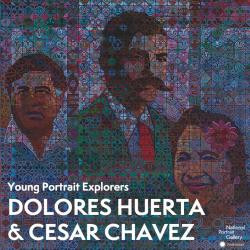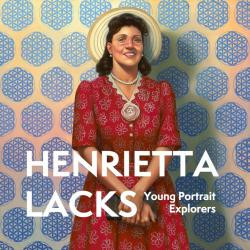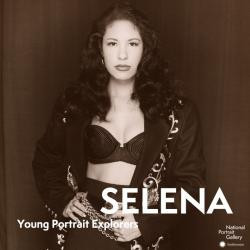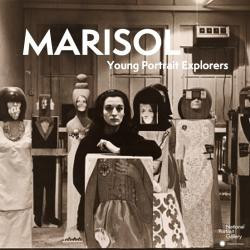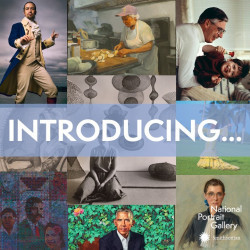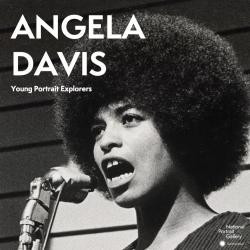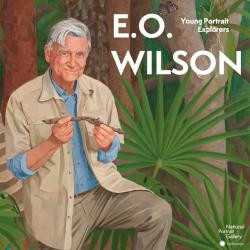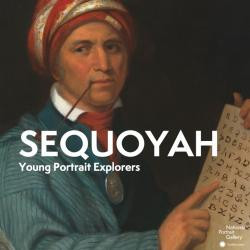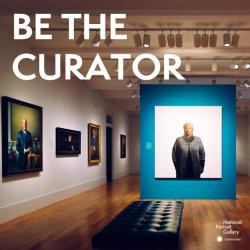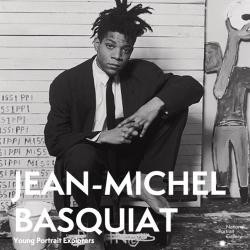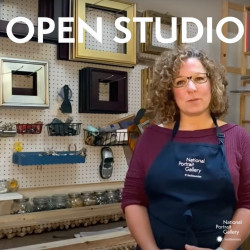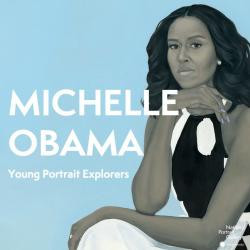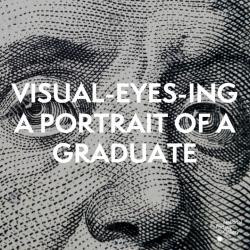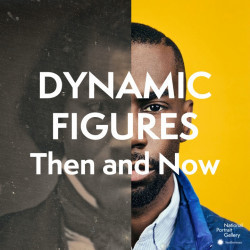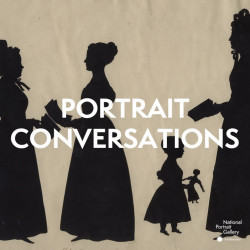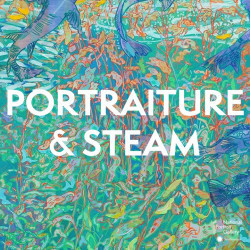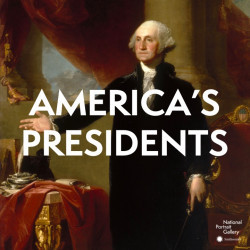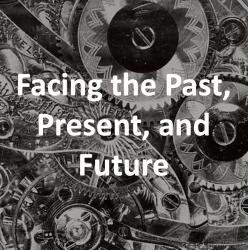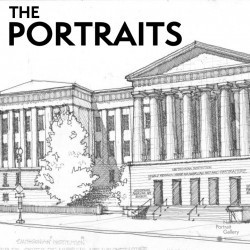Nicole Vance Nash's collections
The Four Justices: Young Portrait Explorers
<p>Learn about the four women justices who have served on the Supreme Court (the highest or most important court of law in the United States).</p>
<p>#NPGteach</p>
<p>Keywords: Supreme Court, Women, Justices, Judges, Sandra Day O'Connor, Ruth Bader Ginsburg, Elena Kagan, Sonia Sotomayor</p>
 Nicole Vance Nash
Nicole Vance Nash
30
Dolores Huerta and César Chávez: Young Portrait Explorers
<p>Learn about civil rights leaders Dolores Huerta and César Chávez and the Aztec symbolism in their portrait.</p>
<p>#NPGteach</p>
 Nicole Vance Nash
Nicole Vance Nash
30
Roger Shimomura: Young Portrait Explorers
<p>Learn about artist Roger Shimomura and how he uses his paintings to express his identity (what makes someone unique).</p>
<p>Keywords: Roger Shimomura, George Washington, Japanese American, Identity</p><p>#NPGteach</p>
 Nicole Vance Nash
Nicole Vance Nash
32
Capital Punishment: Pictured through Portraiture
<p>This Learning Lab complements a National Portrait Gallery custom student program for American University's Fall 2020 course, CORE-107 Complex Problems Seminar: Death Penalty Perspectives. </p>
<p>Students will analyze and discuss portraiture relating to capital punishment in the United States.</p>
<p>#NPGteach</p>
 Nicole Vance Nash
Nicole Vance Nash
17
Introducing... with the National Portrait Gallery
<p>Introducing… a new kind of story time! Each week we shine a light on some of this country's lesser-known history makers and their portraits. With a Portrait Gallery educator, children will learn more about art, hear the stories behind the portraits, and even learn some new vocabulary. Select story times will be in Spanish. For children ages 3 and up and their families.<br></p>
<p>#NPGteach</p>
<p>Keywords: Biography, Story, Famous Americans, Vocabulary, Portraits, Art, Reading Art, Activists, Scientists, Cultural Icons, </p>
 Nicole Vance Nash
Nicole Vance Nash
107
Wilma Rudolph: Young Portrait Explorers
<p>Learn how Wilma Rudolph became the first American woman to win three gold medals in a single Olympics.</p><p></p><p>#NPGteach</p><p></p><p>Keywords: Wilma Rudolph, athlete, Olympics, Finish Line, Spectators, Medals</p>
 Nicole Vance Nash
Nicole Vance Nash
17
Be the Curator
<p>This Learning Lab complements the National Portrait Gallery's student program, Be the Curator. <br></p>
<p>Students will learn about the exhibition process, by touring and reviewing exhibitions, uncovering the roles of curators and exhibition designers, finding themes in exhibitions, and writing museum label text. The program culminates in a hands-on project where students will create their own thematic exhibition from objects in the National Portrait Gallery's collection.<br></p>
<p><strong>Objectives:</strong></p>
<ul><li>Understand the roles of the museum curator and the exhibition designer in a museum </li><li>Work to relate artworks to one another and find a common theme </li><li>Write museum labels that clearly communicate ideas to an audience </li><li>Estimate, measure, and calculate scale </li></ul>
<p>#NPGteach</p>
 Nicole Vance Nash
Nicole Vance Nash
98
Jean-Michel Basquiat: Young Portrait Explorers
<p>Learn about symbols in art and explore the symbolism in Jean-Michel Basquiat’s work.</p>
<p><br>#NPGteach </p>
 Nicole Vance Nash
Nicole Vance Nash
22
Open Studio with the National Portrait Gallery
<p>The National Portrait Gallery is bringing its weekly art workshops to your home via YouTube! Each Friday, we will post a video with a new activity or technique. Grab a family member or your roommates, or make a virtual date with a friend, and get creative with artist Jill Galloway. Artists of all ages and skill levels will enjoy creating art inspired by the National Portrait Gallery’s collection.</p>
<p>Join us for new videos Fridays at 11:00am EST on <a href="https://www.youtube.com/smithsoniannpg" target="_blank" data-saferedirecturl="https://www.google.com/url?q=https://www.youtube.com/smithsoniannpg&source=gmail&ust=1605886355234000&usg=AOvVaw01p62fkn0GK_K4Vt581Wsl">YouTube@smithsoniannpg</a></p>
<p>#NPGteach</p>
<p>Keywords: Studio Art, Painting, Collage, Drawing, Mixed Media, Portraits, Figure Drawing, Art Instruction, Guided Art Activities, Sculpture, </p><p><br></p>
 Nicole Vance Nash
Nicole Vance Nash
287
Portrait Conversations
<p>This Learning Lab Collection complements the National Portrait Gallery student program Portrait Conversations.</p>
<p></p>
<p>Through this discussion based program students will compare and contrast visual elements in portraits across different historical eras, paying particular attention to differences in style and media and to the variety of historical contributions represented. Students will read portraiture by identifying and analyzing the elements of portrayal to learn about the biography of the sitter.</p>
<p></p>
<p>#NPGteach</p>
 Nicole Vance Nash
Nicole Vance Nash
54
Portraiture and STEAM (Science, Technology, Engineering, Art, and Math)
<p>This Learning Lab Collection complements the National Portrait Gallery student program, Portraiture and STEAM.</p>
<p></p>
<p>Students will explore the ways portraiture can be a springboard to discuss STEAM concepts (Science, Technology, Engineering, Art, and Math). By analyzing portraits, students will consider the sitters’ stories and recognize their contributions to the various STEAM fields. During the program, there will be opportunities to examine a broad range of STEAM topics to allow for classroom connections and emphasis on relevance. </p>
<p></p>
<p>After completing the program, students will be better able to:</p>
<ul><li>Identify key components of a portrait and discuss what one can learn about the sitter through these components.</li><li>Identify and analyze the contributions that sitters made in their STEAM fields of expertise.</li><li>Use the museum’s collection and portraiture as a springboard to exploring a variety of STEAM concepts.</li></ul>
<p>#NPGteach</p>
 Nicole Vance Nash
Nicole Vance Nash
75
America's Presidents
<p>This Learning Lab collection complements the National Portrait Gallery student program, America's Presidents.</p>
<p></p>
<p>The America’s Presidents student program focuses on the idea of what we can learn about presidents and their legacies from how they are portrayed in their portraits, on what it means to look “presidential” in a portrait, and on how the portrayal of presidents has changed over time.</p>
<p>After completing the program, students will be better able to:</p>
<p>● Identify key components of a portrait and analyze how these components fit into the way the sitter is defined/remembered.<br>● Compare and contrast what different portraits reflect about how each president is portrayed and remembered.<br>● Identify American presidents and analyze their contributions to U.S. History.<br></p>
 Nicole Vance Nash
Nicole Vance Nash
90


